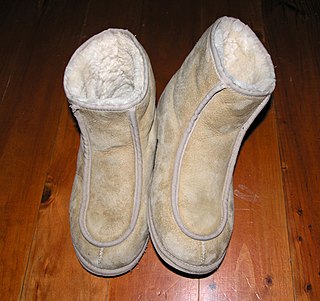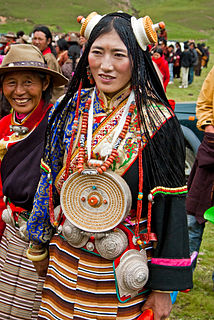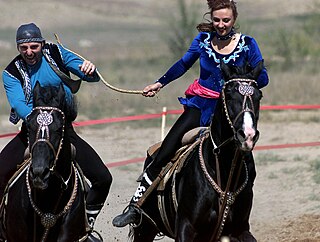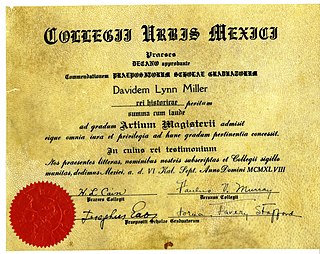
A condom is a sheath-shaped barrier device, used during sexual intercourse to reduce the probability of pregnancy or a sexually transmitted infection (STI). There are both male and female condoms. With proper use—and use at every act of intercourse—women whose partners use male condoms experience a 2% per-year pregnancy rate. With typical use the rate of pregnancy is 18% per-year. Their use greatly decreases the risk of gonorrhea, chlamydia, trichomoniasis, hepatitis B, and HIV/AIDS. They also to a lesser extent protect against genital herpes, human papillomavirus (HPV), and syphilis.

Safe sex is sexual activity using methods or devices to reduce the risk of transmitting or acquiring sexually transmitted infections (STIs), especially HIV. "Safe sex" is also sometimes referred to as safer sex or protected sex to indicate that some safe sex practices do not completely eliminate STI risks. It is also sometimes used to describe methods aimed at preventing pregnancy.

Ugg boots are a unisex style of sheepskin boot originating in Australia and New Zealand. The boots are typically made of twin-faced sheepskin with fleece on the inside, a tanned outer surface and a synthetic sole. The term, ugg boots, originated from Australia, initially for utilitarian footwear worn for warmth, and which were often worn by surfers during the 1960s. In the 1970s, the boots were introduced to the surf culture of the United Kingdom and the United States. Sheepskin boots became a fashion trend in the U.S. in the late 1990s and as a worldwide trend in the mid-2000s. In Australia, they are worn predominantly as slippers and often associated with "daggy" fashion sense and "bogan" culture.

Sheep farming is the raising and breeding of domestic sheep. It is a branch of animal husbandry. Sheep are raised principally for their meat, milk, and fiber (wool). They also yield sheepskin and parchment.

Chamois leather is a type of porous leather, traditionally the skin of the chamois, a type of European mountain goat but today it is made almost exclusively from the flesh split of a sheepskin.

The Dorper is a South African breed of domestic sheep developed by crossing Dorset Horn and the Blackhead Persian sheep. The breed was created through the efforts of the South African Department of Agriculture to breed a meat sheep suitable to the more arid regions of the country. It is now farmed in other areas as well, and is the second most common sheep breed in South Africa.
The transumanza is the Italian term for transhumance, the traditional twice yearly migration of sheep and cows from the highlands to the lowlands, and back. The word literally means "crossing the land".

A chuba is a long sheepskin coat made of thick Tibetan wool worn by many of the nomadic peoples of high altitude in the cold mountains of Tibet.

Shearling is a skin from a recently shorn sheep or lamb that has been tanned and dressed with the wool left on. It has a suede surface on one side and a clipped fur surface on the other. Usually the suede side is worn outward. Shearling can only be made from real sheepskin, not from synthetic fibers. Real shearling breathes and is more flexible, much heavier in weight and the fur is much denser than synthetic. Synthetic shearling fur is typically called sherpa. Synthetic or fake shearling has a bit of a sheen to its outer while real shearling outer hide is dull and a bit tacky to the touch. Genuine shearling is also smoother to the touch than synthetic shearling..

A female condom is a device that is used during sexual intercourse as a barrier contraceptive to reduce the risk of sexually transmitted infections and unintended pregnancy. Invented by Danish MD Lasse Hessel, it is worn internally by the female partner and provides a physical barrier to prevent exposure to ejaculated semen or other body fluids. Female condoms can be used by the receptive partner during anal sex.
The history of condoms goes back at least several centuries, and perhaps beyond. For most of their history, condoms have been used both as a method of birth control, and as a protective measure against sexually transmitted diseases. Condoms have been made from a variety of materials; prior to the 19th century, chemically treated linen and animal tissue are the best documented varieties. Rubber condoms gained popularity in the mid-19th century, and in the early 20th century major advances were made in manufacturing techniques. Prior to the introduction of the combined oral contraceptive pill, condoms were the most popular birth "control" method in the Western world. In the second half of the 20th century, the low cost of condoms contributed to their importance in family planning programs throughout the developing world. Condoms have also become increasingly important in efforts to fight the AIDS pandemic. The oldest condoms ever excavated were found in a cesspit located in the grounds of Dudley Castle and were made from animal membrane, the condoms dated back to as early as 1642.

A leather jacket is a jacket-length coat that is usually worn on top of other apparel or item of clothing, and made from the tanned hide of various animals. The leather material is typically dyed black, or various shades of brown, but a wide range of colors is possible. Leather jackets can be designed for many purposes, and specific styles have been associated with subcultures such as greasers, rednecks, cowboys, motorcyclists, military aviators, mobsters, police, secret agents, and music subcultures, who have worn the garment for protective or fashionable reasons, and occasionally to create a potentially intimidating appearance. National Leather Jacket day occurs every June 14th since the Hell's Angels proposed the idea in 1975.

Shearling coats are made from processed lambskin, sheepskin, or pelt. This "shearing" process creates a uniform depth of the wool fibers for a uniform feel and look. Shearling coats and garments are made from pelts by tanning them with the wool of uniform depth still on them. The result is a soft, natural fleece material that is heavy due to thickness of outer skin and degree of fur on the inside, which is quite dense. The length of the sheep fur can be fairly long, but it is typically cropped short to about two inches or five centimeters. Most find these coats to be extremely comfortable and warm. Due to the high quality and uniqueness of shearling, coats and garment are considered luxurious. Sheepskin and Shearling are synonymous. The outer must be sheepskin to be Shearling on the inside.
A crowdy-crawn is a wooden hoop covered with sheepskin used as a percussion instrument in western Cornwall at least as early as 1880. It is similar to the Irish bodhrán. It is used by some modern Cornish traditional music groups as a solo or accompaniment instrument. The name crowdy-crawn is derived from the Cornish "croder croghen," literally "skin sieve," sometimes shortened to "crowd."

Kazakh clothing, worn by the Kazakh people, is often made of materials suited to the region's extreme climate and the people's nomadic lifestyle. It is commonly decorated with elaborate ornaments made from bird beaks, animal horns, hooves and feet. Although contemporary Kazakhs usually wear Western dress, the Turkic people wear more traditional clothing for holidays and special occasions.

Kidskin or kid leather is a type of soft, thin leather that is traditionally used for gloves. It is widely used for other fashion purposes such as footwear and clothing. Kidskin is traditionally made from goatskin - more specifically, the skin of young goats, although equivalent leathers such as lambskin and chickenskin give the same effect.

A car coat is an outer garment originally made to be worn by automobile drivers and passengers. First designed to provide maximum warmth and coverage, over time it became a much shorter garment. Today it describes a coat that typically ends at mid thigh. It is worn by both men and women.

Santiniketan Leather Goods are leather products made in Santiniketan and surrounding villages near Kolkata, West Bengal, India. The material used is vegetable tanned leather with art work done by touch dyeing. Its artistic leather bags are popular in foreign markets and are exported to many countries including Japan and the U.S. They are generally made of E. I. Leather from sheepskin and goatskin.

















